
Tracing the Past: 6 Historic Trails In Wyoming
From sweeping plains to rugged mountain passes, the historic trails in Wyoming tell a vivid story of ambition, resilience, and the American spirit of exploration. Each route served as a lifeline to settlers, gold seekers, and pioneers, shaping not just the state’s geography but its cultural identity. Today, these paths provide an immersive portal into the early days of Wyoming, where the echoes of wagon wheels and hoofbeats still stir the imagination.
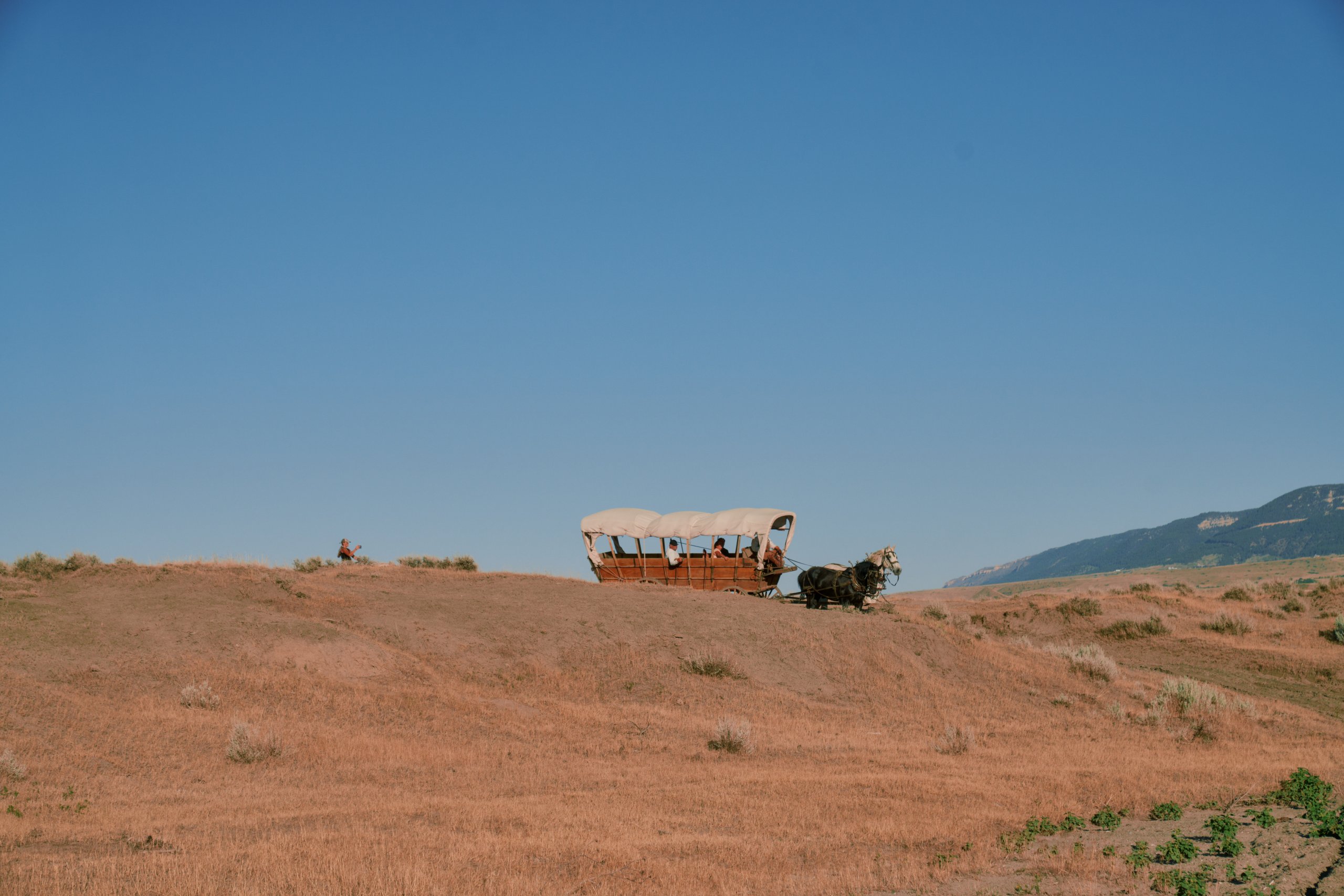
Oregon National Historic Trail
Spanning 2,170 miles from Missouri to Oregon, the Oregon National Historic Trail is not only one of the most iconic historic trails in Wyoming, but also one of the most significant in U.S. history. In the mid-1800s, more than 300,000 emigrants journeyed Westward in search of land, freedom, and opportunity in the fertile valleys of Oregon Country—with Wyoming serving as a key crossroads for their trek. The trip was long and arduous, often marked by challenging terrain, disease, and unforgiving weather, yet it became a defining chapter in the story of American Westward expansion.
Today, travelers can wander historic sites, interpretive centers, and museums that bring this epic journey to life—including Fort Laramie National Historic Site. One of the most compelling reminders of this mass migration is the Oregon Trail Ruts State Historic Site, where visitors can still see original wagon ruts in Wyoming carved deep into the sandstone. For modern-day adventurers, a road trip along the Oregon Trail Historic Byway offers a powerful way to trace this legendary route and connect with the stories that helped shape the state—and the nation.
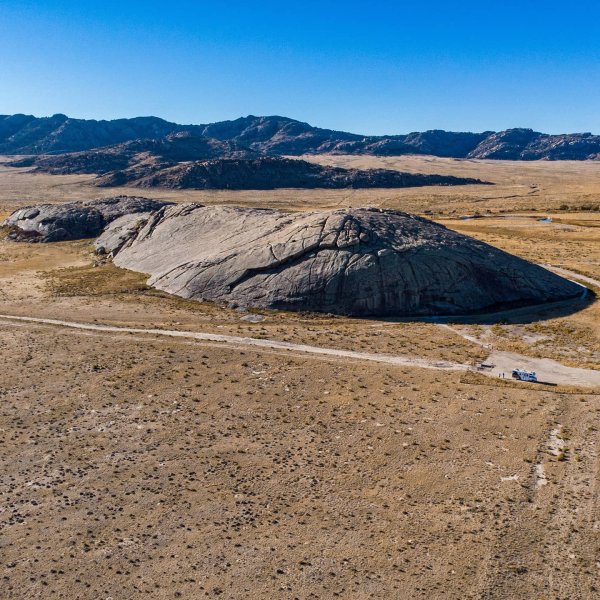
Mormon Pioneer National Historic Trail
Between 1846 and 1869, more than 70,000 Mormon emigrants fled religious persecution in the East and journeyed toward Salt Lake City along what became known as the Mormon Pioneer National Historic Trail. This major migration route stretched from Illinois through Iowa, Nebraska, and Wyoming before reaching Utah, cutting through the heart of the American West.
“The Mormon pioneers experienced the same harsh weather and overland travel conditions as their counterparts along the Oregon and California Trails,” says Reid Miller, a Visitor Information Specialist at the National Historic Trails Interpretive Center. “Walking headlong into stinging sand every day, [unavoidable] thunderstorms with strong winds and lightning, rattlesnakes, and disease were constant companions along the way.”
One of the most tragic episodes of the journey occurred in October of 1856, when early winter storms descended upon handcart companies already weakened by illness and limited supplies. Many, unfortunately, didn’t survive. But today, their memory and determination serve as a testament to the power of religious conviction in the wilderness.
These pioneers, however, endured more than just the elements. “Unfortunately, one constant challenge to their progress was the prejudice that hounded them since their church was established in 1830,“ adds Miller.. “Distrust and suspicion on the part of non-members of their faith was especially prevalent and blunt in some widely circulated newspapers of the day, which fueled broader public resentment throughout the nation and Territories.”
Closely following the Oregon Trail through Wyoming, the route shares many key landmarks—including Register Cliff and Independence Rock—where emigrants left their names carved in stone, physically inscribing their journey into the landscape. Beyond its immediate role in facilitating Westward migration, the trail also helped shape the region’s long-term infrastructure, influencing the placement of roads, railroads, and telegraph lines. It also contributed to the growth of early frontier settlements and trade networks, making it one of the most impactful migration routes of the 19th century.
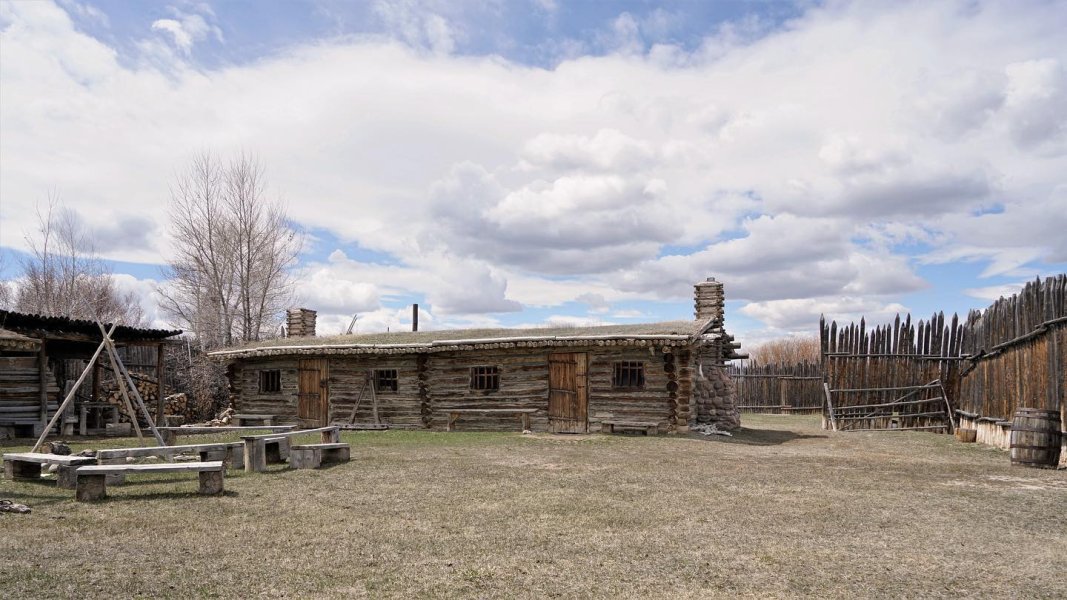
California National Historic Trail
Stretching 2,000 miles from Missouri to central California, the California National Historic Trail was a vital artery of Westward migration. Between 1841 and 1869, more than 250,000 emigrants traveled this route, drawn by the promise of gold and fertile farmland. As the largest mass migration in American history, this national historic trail in Wyoming played an important part in the nation’s expansion and opened the door to the development of future territories. Within Wyoming, it carved out critical migration corridors and established key landmarks—such as South Pass and Fort Bridger—that would later guide the state’s transportation networks and early communities. Visitors today can check out preserved sites along the trail, including Fort Bridger State Historic Site, which offers insight into the hardships, hopes, and determination of those who journeyed West.
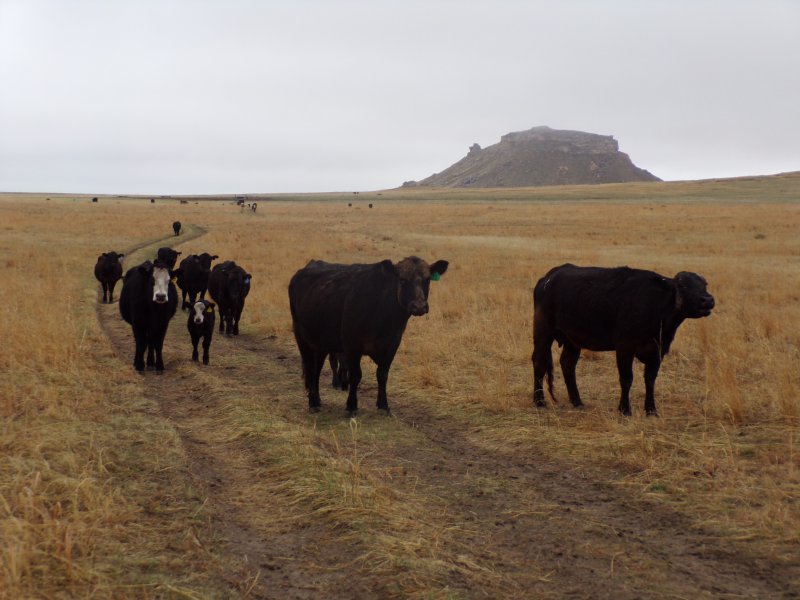
Texas Trail
Known as the Western Cattle Trail, the Texas Trail became a monumental route for moving cattle north from Texas to new markets. From 1874 to 1884, the main route winded from Texas through Kansas to Nebraska, later expanding into Wyoming, Montana, and Canada between 1885 and 1897. “The cattle were generally steered along ancient bison migration routes where grasses were abundant,” says Miller. “Thunderstorms, grass fires, and Indian attacks were always a possibility, as were illness and accidents for humans and cattle alike. [And] trail riders were sometimes deprived of sleep for days at a stretch.” While daily challenges made each drive a test of endurance, they also helped shape the uniquely rugged and resilient cowboy spirit that still defines Wyoming today.
Not only that, the trail saw an estimated six million cattle driven along its path (more than all other trails of its kind combined), laying the groundwork for Wyoming’s booming cattle industry and helping establish frontier towns along the way.
Care to dive deeper into this incredible history? Stop by the Texas Trail Museum in Pine Bluffs and discover the state’s deep roots in cowboy culture and ranching.
Pony Express National Historic Trail
Speeding correspondence across vast distances, the Pony Express was a fast, horse-mounted mail delivery system that operated from 1860 to 1861, carrying messages between Missouri and California in just 10 days—an unprecedented feat at the time. Though short-lived, the service was like no other and dramatically transformed cross-country communication, underscoring the urgent need for swifter, more reliable systems. In Wyoming, key relay stations near Fort Bridger and the Sweetwater River played a crucial role in molding early transportation and communication routes across the state. Today, history buffs can visit several historic points along the Pony Express National Historic Trail, including the National Historic Trails Interpretive Center in Casper.
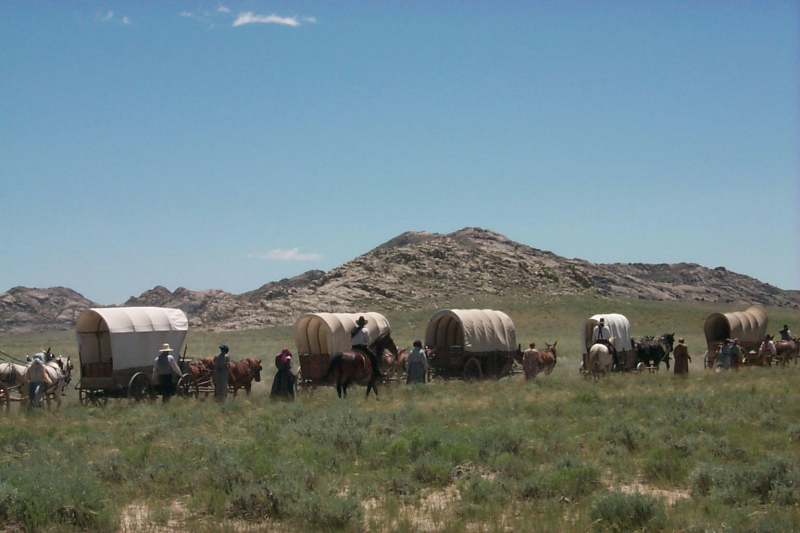
Bozeman Trail
Forged during the Gold Rush, the Bozeman Trail connected the Main Oregon Trail in central Wyoming to the goldfields of Virginia City, Montana from 1863 to 1868. Weaving through Wyoming’s Powder River Basin and skirting the Bighorn Mountains, this historic trail in Wyoming offered a quicker—but far riskier—route for settlers and prospectors. Tensions escalated as this shortcut traversed hunting grounds sacred to the Lakota, Cheyenne, and Arapaho peoples, ultimately sparking Red Cloud’s War. Over time, forts such as Fort Phil Kearny emerged along the Bozeman Trail, marking the U.S. government’s early and controversial military presence in northern Wyoming and leaving a lasting impact on the region’s settlement patterns.
Living History: Reenactments & Events
Wyoming’s historic trails aren’t mere relics of the past—they’re honored and reimagined each year through immersive experiences that invite modern travelers to personally venture into this iconic era.
Pony Express Re-Ride
Every June, nearly 700 riders from the National Pony Express Association retrace the entire 1,966-mile route, relaying commemorative mail over 10 days and nights. You can follow their progress in person along the trail or head to the National Pony Express website, where you’ll see real-time updates via a GPS tracker carried by each rider.
Mormon Pioneer Handcarts
At the Mormon Handcart Historic Site & Visitor Center, travelers can step into the shoes of early emigrants by borrowing a handcart (free of charge) and walking along interpretive trails that bring this chapter of history to life.
